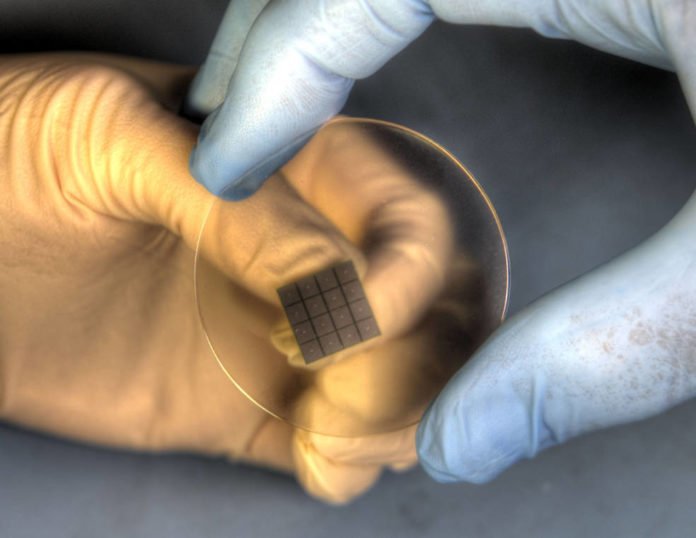Two teams at NASA are studying the applications for gallium nitride, a crystal-type semiconductor that currently being used in consumer electronics such as laser diodes in DVD readers. Gallium nitride (GaN) has low electrical resistance and thus loses only a small proportion of power as heat.
Fascinatingly, the material can potentially bear a wide range of temperatures. It is also resistant to radiation, and as it turns out, adept at detecting energetic particles.
Scientists are NASA’s Goddard Space Flight Center in Greenbelt, Maryland are exploring the material’s application so that they can use it for space exploration.
With their funding, engineer Jean-Marie Lauenstein and scientist Elizabeth MacDonald are investigating Gallium-Nitride High Electron Mobility Transistors, or GaN HEMTs, for use in studying how Earth’s magnetosphere couples to its ionosphere — a key question in the field of heliophysics, which among other things studies the forces that drive change in our space environment. Stanley Hunter and Georgia de Nolfo, meanwhile, are investigating the material’s use on a solid-state neutron detector that is relevant to both science and homeland security.
Lauenstein said, “Even though gallium-nitride is predicted to be resistant to many types of radiation damage encountered in space, neither NASA nor the U.S. military has established standards characterizing the performance of these transistor-enabled devices when exposed to the extreme radiation in space.”
“When struck by galactic cosmic rays or other energetic particles, electronic equipment can experience catastrophic or transient single-event upsets. We have standards for silicon. We don’t know if the methods for silicon transistors would apply to gallium-nitride transistors. With silicon, we can assess the threshold for failure.”
Scientists along with the Los Alamos National Laboratory in New Mexico, a parts manufacturer, and the NASA Electronic Parts and Packaging are building up criteria guaranteeing a GaNs-type gadget could withstand the impacts of conceivably harmful particles created by galactic cosmic beams and different sources.
The material could be valuable in the electron-beam accelerator — contained gallium-nitride transistors — worked to delineate magnetic lines in Earth’s defensive magnetosphere to their impressions in Earth’s ionosphere where aurora happen — indicating how the two areas of close Earth space interface.
MacDonald said, “The team’s research on radiation tolerance helps us understand how to fly these accelerators in the harsh space environment over the mission’s lifetime.”
Gallium-nitride offers a potential solution for building a detector and imaging neutrons, which are short-lived and typically expire after about 15 minutes. Neutrons can be generated by energetic events in the Sun as well as cosmic ray interactions with Earth’s upper atmosphere.
The neutrons created by cosmic beams in the atmosphere can add to Earth’s radiation belt — a swatch of radiation encompassing Earth that among other things can interfere with onboard satellite electronics — when they decay. Researchers have discovered GaN can form the basis of a highly sensitive neutron detector.
De Nolfo said, “The gallium-nitride crystal could be game-changing for us.”
Hunter said, “Gallium-nitride is reasonably well understood in the photo-electronics industry, but I think we’re pushing the envelope a little on this application. The beauty of the concept is that it would contain no moving parts, use little power, and operate in a vacuum. If it works, the instrument would benefit different space science disciplines and the military in detecting nuclear material.”
